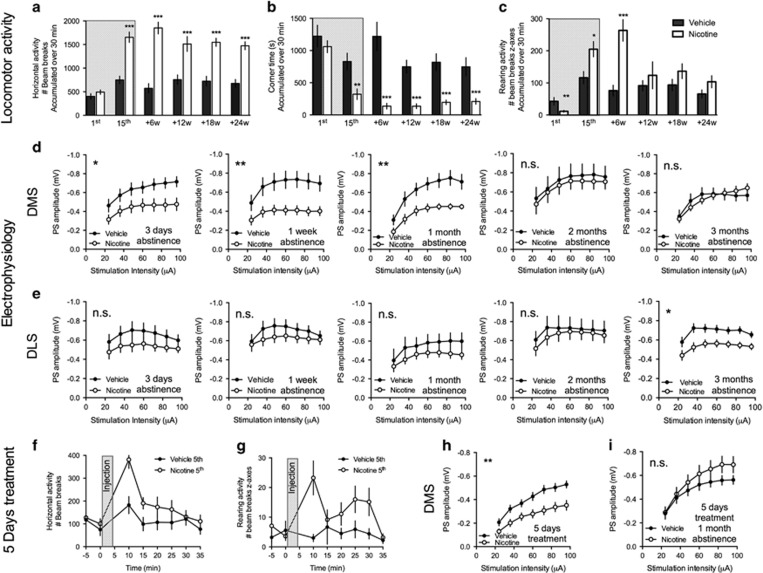Figure 1.
Long-lasting changes in locomotion and progressive changes in striatal neurotransmission following nicotine exposure. Rats received 15 injections of either vehicle or nicotine over a 3-week period (hatched area) and locomotor activity in response to vehicle or nicotine injection was assessed in different batches of animals after 6, 12, 18, and 24 weeks of abstinence (n=6–12 per group). (a and b) Repeated administration of nicotine significantly enhance horizontal activity and suppressed corner time in a manner that was sustained even after 6 months of nicotine abstinence. (c) Nicotine initially depressed rearing activity, whereas repeated administration enhanced vertical beam breaks for up to 6 weeks after the last administration. (d) Previous exposure to nicotine significantly depressed the response amplitude in the DMS for up to 1 month. (e) In the dorsolateral striatum (DLS), a decline in input/output function developed over time and was significant following 3 months of nicotine abstinence. (f and g) Five injections of nicotine were sufficient to enhance horizontal activity and rearing. Time-course figure shows beam breaks during the 5th administration of vehicle/nicotine (n=10 per group). (h) Input/output function was significantly depressed in the DMS of rats receiving five injections of nicotine as compared with vehicle-treated control. (i) This treatment paradigm, however, was not sufficient to produce a long-lasting decline in population spikes (PS) amplitude during nicotine abstinence. *Significant effect by treatment (*P<0.05, **P<0.01, and ***P<0.001).

